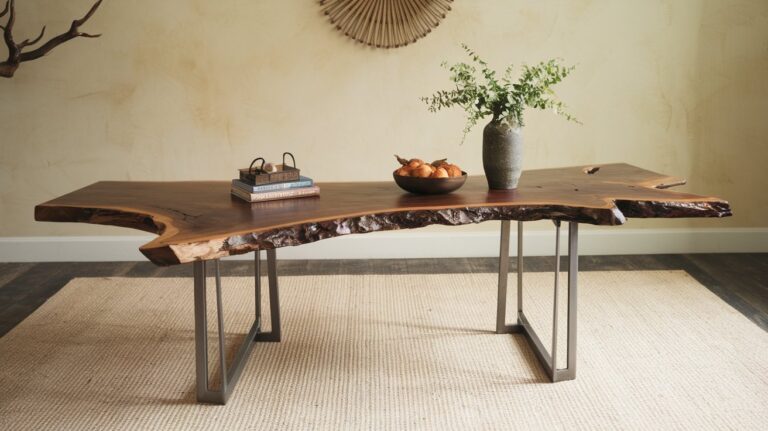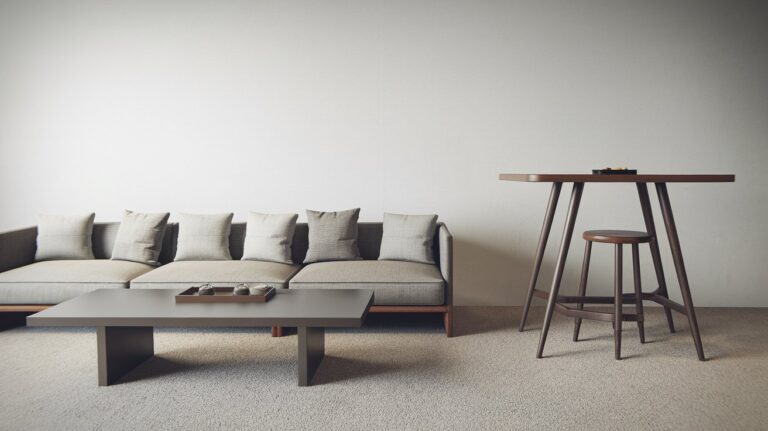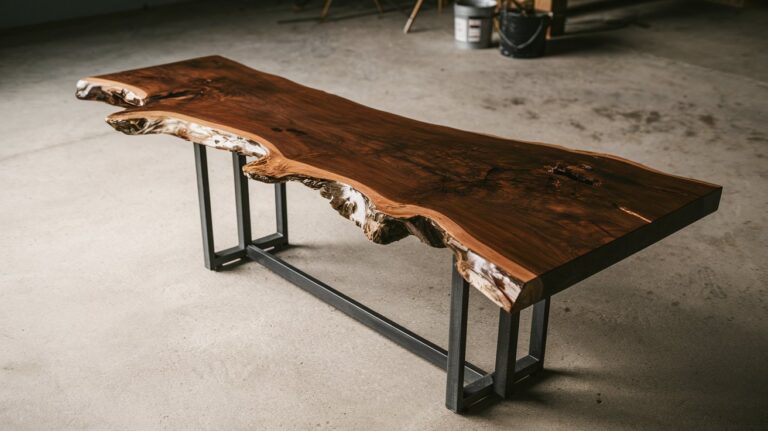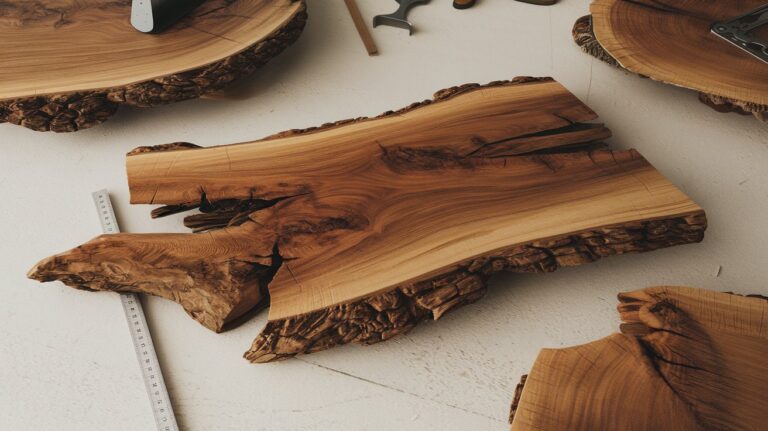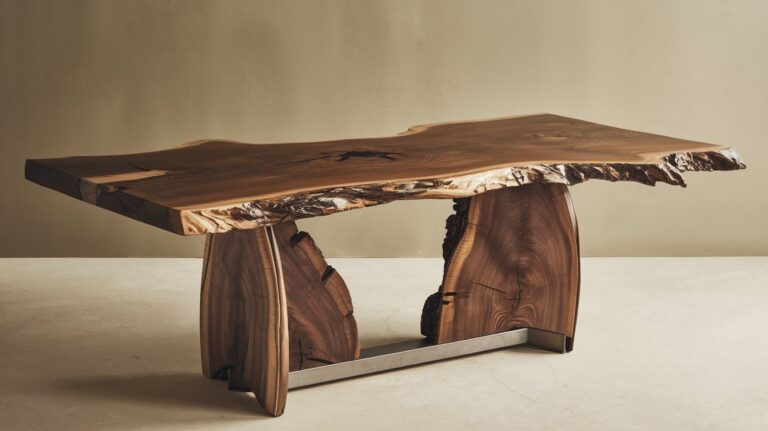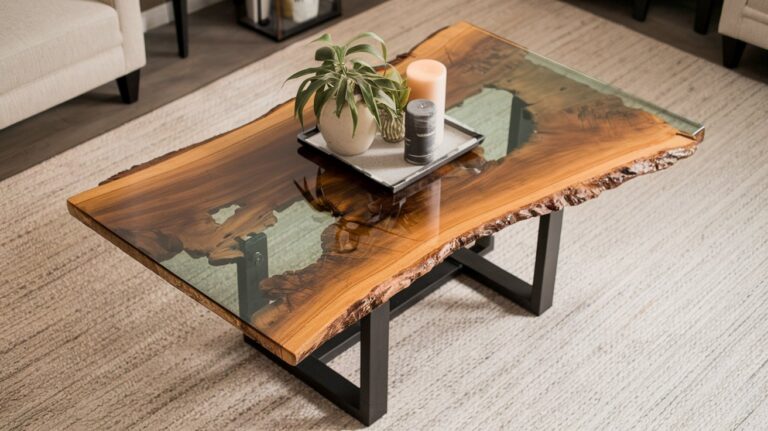Live Edge End Table Guide: Best Options & Buying Tips 2025
A live edge end table brings natural beauty and unique character to any living space, showcasing the raw edge of wood in its original form. These distinctive furniture pieces have gained tremendous popularity in 2025, offering homeowners a perfect blend of rustic charm and modern sophistication. Whether you’re seeking a conversation starter or functional accent piece, live edge end tables provide unmatched aesthetic appeal and versatility.
Understanding Live Edge End Tables
Live edge furniture preserves the natural contours of the tree’s original edge, creating one-of-a-kind pieces that celebrate wood’s organic beauty. A live edge end table typically features one or more sides that maintain the bark line or natural curve of the tree trunk. This design philosophy originated from the craftsman movement and has evolved into a mainstream furniture trend that appeals to both traditional and contemporary home designs.
The construction process involves carefully selecting wood slabs with interesting edge patterns, then stabilizing and finishing them while preserving their natural characteristics. Popular wood species for live edge tables include walnut, oak, cherry, and maple, each offering distinct grain patterns and color variations. The natural imperfections, knots, and grain patterns make each table truly unique, ensuring no two pieces are identical.
Key Design Elements
The defining characteristic of any live edge end table is its preserved natural wood edge, which creates an organic silhouette that contrasts beautifully with geometric furniture pieces. Most designs incorporate metal legs or bases to provide modern contrast, while others feature wooden pedestal bases for a more rustic appearance. The thickness of the wood slab typically ranges from 1.5 to 3 inches, providing substantial presence and durability.
Popular Wood Species
Walnut remains the most sought-after species for live edge end tables due to its rich chocolate tones and striking grain patterns. Oak offers durability and classic appeal with prominent grain lines, while cherry provides elegant reddish-brown hues that deepen with age. Maple presents lighter tones with subtle grain patterns, making it ideal for modern interiors seeking natural warmth without overwhelming darkness.
Best Places to Buy Live Edge End Tables
The market for live edge end tables for sale has expanded significantly in 2025, with options ranging from budget-friendly retailers to custom artisan workshops. Major furniture retailers like West Elm, CB2, and Room & Board offer curated selections starting around $400, while specialty woodworking shops provide custom pieces ranging from $800 to $2,500 depending on size and wood species.
Online marketplaces have become increasingly popular for live edge end table purchases, offering extensive variety and competitive pricing. Etsy features numerous artisan-crafted options with customization possibilities, while Amazon provides mass-produced alternatives for budget-conscious buyers. Local furniture stores often carry regional woodworker pieces, supporting local craftsmen while providing opportunity to inspect quality before purchase.
Retail Chain Options
Major retailers have recognized the growing demand for live edge furniture, with Costco occasionally featuring live edge dining tables and end tables in their seasonal furniture collections. HomeGoods and World Market regularly stock imported live edge pieces at competitive prices, though quality and wood species may vary. These retailers typically offer pieces in the $200-600 range for end tables.
Custom and Artisan Sources
Custom woodworkers and artisan furniture makers provide the highest quality live edge end tables with personalization options for wood species, dimensions, and base designs. These craftsmen often source locally harvested wood and can accommodate specific design requests. Prices typically start around $600 for smaller pieces and can exceed $1,500 for premium wood species and complex designs.
Live Edge End Tables with Storage Features
Modern live edge end tables with storage combine natural beauty with practical functionality, addressing the growing need for space-efficient furniture in smaller homes. These innovative designs incorporate drawers, shelves, or hidden compartments without compromising the organic aesthetic that makes live edge furniture appealing. Storage solutions are typically integrated into the base design rather than the live edge slab itself.
Popular storage configurations include single or double drawers mounted beneath the wood slab, open shelving integrated into metal bases, and lift-top designs that reveal hidden storage compartments. Some designs feature live edge end tables with drawers that utilize the natural wood for drawer fronts, creating seamless integration between storage function and aesthetic appeal.
Drawer Integration Options
The most popular live edge end table with drawer designs feature soft-close mechanisms and full-extension glides for smooth operation. Drawer boxes are typically constructed from plywood or solid wood with dovetail joints for durability. Some designs incorporate floating drawer fronts cut from the same wood slab as the tabletop, creating visual continuity while providing concealed storage.
Open Storage Solutions
Open storage live edge end tables feature shelves or cubbies integrated into the base structure, providing display space for books, decorative objects, or media equipment. These designs maintain visual lightness while offering practical storage, making them ideal for smaller spaces where traditional closed storage might feel overwhelming. Metal frame bases commonly incorporate geometric shelving patterns that complement the organic wood edge.
DIY Live Edge End Table Projects
Creating a live edge end table DIY project offers significant cost savings and personal satisfaction, with basic designs achievable by intermediate woodworkers. The process typically involves sourcing a suitable wood slab, preparing and finishing the surface, and attaching a base structure. Essential tools include a circular saw, router, sanders, and appropriate safety equipment for working with live edge slabs.
Wood slab sourcing represents the most critical aspect of any DIY live edge table project, as the slab quality directly impacts the final result. Urban lumber suppliers, sawmills, and specialty wood dealers offer kiln-dried slabs suitable for furniture making. Prices for quality slabs range from $50-200 depending on species, size, and figure quality. Proper kiln drying is essential to prevent cracking and warping in the finished piece.
Essential Tools and Materials
Successful live edge end table DIY projects require specific tools for working with thick wood slabs. A track saw or circular saw with appropriate blade depth handles initial sizing cuts, while a router with various bits creates smooth edges and joinery details. Sanders ranging from 80 to 320 grit prepare surfaces for finishing, and clamps secure assemblies during glue-up processes.
Step-by-Step Construction Process
The construction process begins with slab preparation, including flattening, edge cleanup, and defect repair using wood fillers or epoxy resins. Surface preparation involves progressive sanding through multiple grits to achieve smooth, ready-to-finish surfaces. Base attachment methods vary from simple bolt-through connections to more complex mortise and tenon joinery depending on the chosen base design and builder skill level.
Pricing and Value Considerations
The cost of a live edge end table varies dramatically based on wood species, craftsmanship quality, size, and additional features like storage components. Entry-level mass-produced pieces start around $200-400, while premium custom pieces from skilled artisans can range from $800-2,500 or more for exotic wood species and complex designs.
Value assessment should consider wood quality, construction methods, finish durability, and design uniqueness when comparing live edge end tables for sale. Solid wood construction commands premium pricing over veneer alternatives, while hand-selected wood slabs with exceptional figure patterns justify higher costs. Custom pieces typically offer better long-term value due to superior materials and construction techniques compared to mass-produced alternatives.
Care and Maintenance Guidelines
Proper care ensures your live edge end table maintains its natural beauty and structural integrity for decades. Regular dusting with microfiber cloths prevents debris accumulation in the natural edge crevices, while periodic conditioning with appropriate wood oils maintains moisture balance and prevents cracking. Different finishes require specific care approaches, with oil finishes needing more frequent maintenance than polyurethane alternatives.
Environmental factors significantly impact live edge furniture longevity, with stable humidity levels being crucial for preventing movement and cracking. Ideal indoor humidity ranges from 30-50%, with consistent levels being more important than specific percentages. Direct sunlight exposure should be minimized to prevent uneven fading, and protective measures like coasters and placemats help prevent water rings and heat damage.
Design Integration and Styling Tips
Successfully incorporating a live edge end table into your interior design requires balancing its organic character with existing furniture styles and room proportions. These pieces work exceptionally well in transitional spaces that blend traditional and contemporary elements, serving as natural bridges between different design aesthetics. The key is allowing the live edge to serve as a focal point while ensuring it complements rather than competes with other room elements.
Color coordination plays a crucial role in live edge table integration, with wood tones influencing fabric selections, wall colors, and accent piece choices. Darker woods like walnut pair beautifully with neutral palettes and metallic accents, while lighter species like maple complement both warm and cool color schemes. The natural texture provides visual interest that can reduce the need for additional decorative elements in minimalist spaces.
Related video about live edge end table
This video complements the article information with a practical visual demonstration.
FAQ – Common Questions
How much should I expect to pay for a quality live edge end table?
Quality live edge end tables typically range from $400-1,200 for retail pieces, with custom artisan tables costing $800-2,500. Factors affecting price include wood species, size, craftsmanship quality, and additional features like storage. Mass-produced options start around $200 but may compromise on wood quality and construction.
What wood species work best for live edge end tables?
Walnut, oak, cherry, and maple are the most popular choices for live edge end tables. Walnut offers rich chocolate tones with dramatic grain, oak provides durability with prominent patterns, cherry delivers elegant reddish hues, and maple presents lighter tones ideal for modern spaces. Each species offers unique characteristics and pricing.
Are live edge end tables difficult to maintain?
Live edge end tables require minimal maintenance with proper care. Regular dusting, occasional conditioning with wood oil, and protection from moisture and direct sunlight preserve their beauty. The natural edge may collect dust more than straight edges, but gentle brushing easily removes debris. Quality finishes protect against daily wear.
Can I find live edge end tables with storage options?
Live edge end tables with storage are increasingly available, featuring drawers, shelves, or hidden compartments. These designs integrate storage into the base structure while preserving the natural wood slab top. Options include single or double drawers, open shelving, and lift-top designs with concealed storage compartments.
Is it worth building a DIY live edge end table?
DIY live edge end table projects offer significant cost savings and customization options for intermediate woodworkers. Material costs typically range $100-300 depending on wood slab quality, compared to $400-1,200 for comparable retail pieces. However, proper tools, workspace, and finishing skills are essential for professional-quality results.
Where can I buy live edge end tables in the United States?
Live edge end tables are available through major furniture retailers like West Elm and CB2, online marketplaces including Amazon and Etsy, specialty woodworking shops, and local artisan craftsmen. Costco occasionally features live edge pieces in seasonal collections. Custom options provide the highest quality but require longer lead times and higher investment.
| Key Aspect | Important Details | Benefit |
|---|---|---|
| Natural Wood Beauty | Preserves tree’s original edge with unique grain patterns | Creates one-of-a-kind furniture pieces |
| Price Range | $200-2,500 depending on quality and customization | Options for every budget and style preference |
| Storage Options | Drawers, shelves, and hidden compartments available | Combines beauty with practical functionality |
| DIY Potential | Achievable for intermediate woodworkers with proper tools | Significant cost savings and personal satisfaction |
| Maintenance | Simple care with regular dusting and occasional oiling | Long-lasting beauty with minimal effort |

